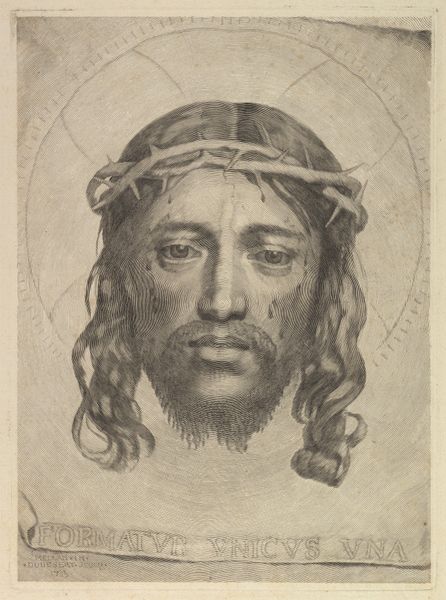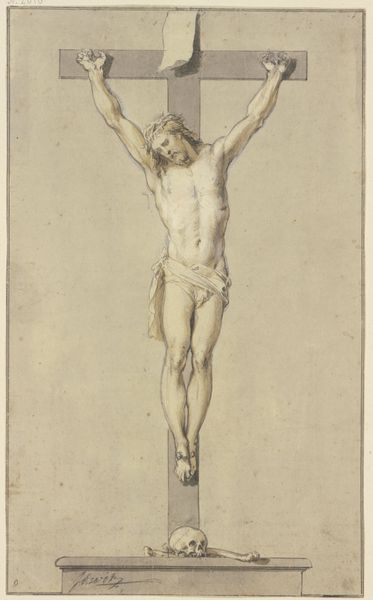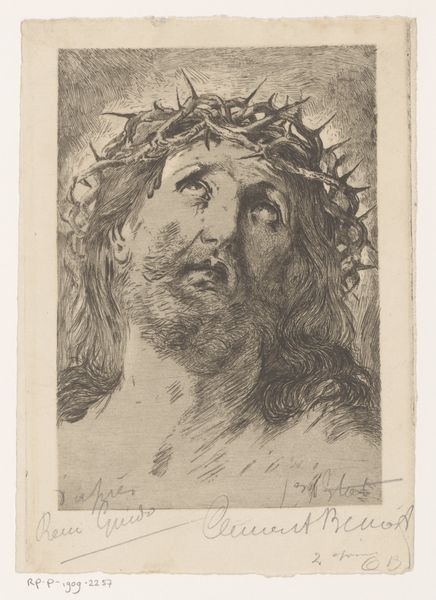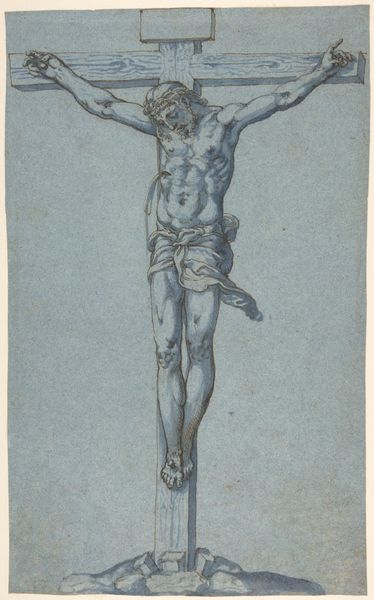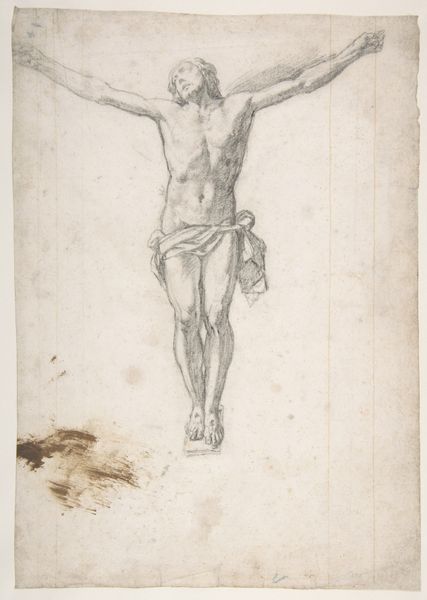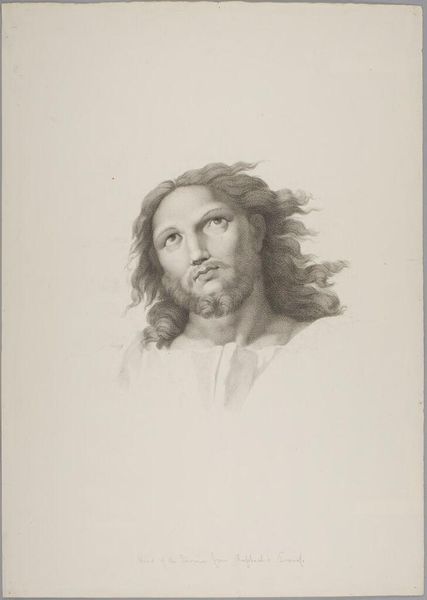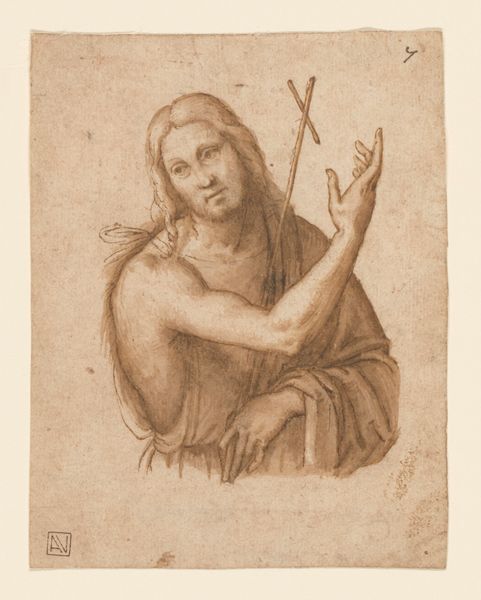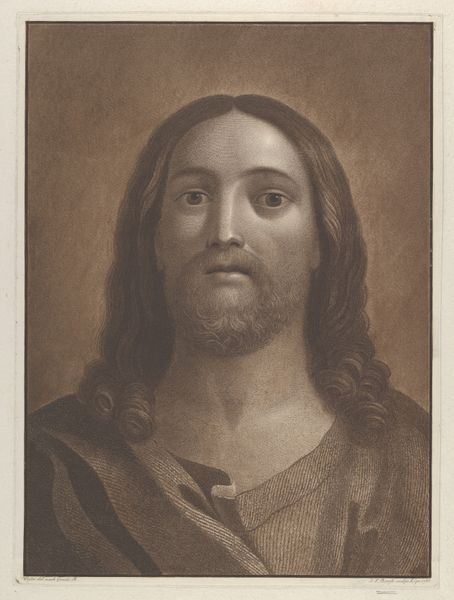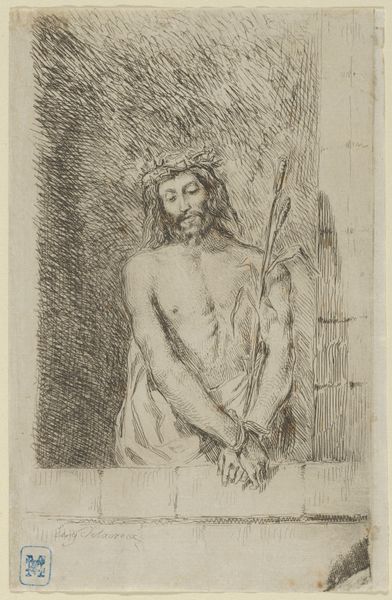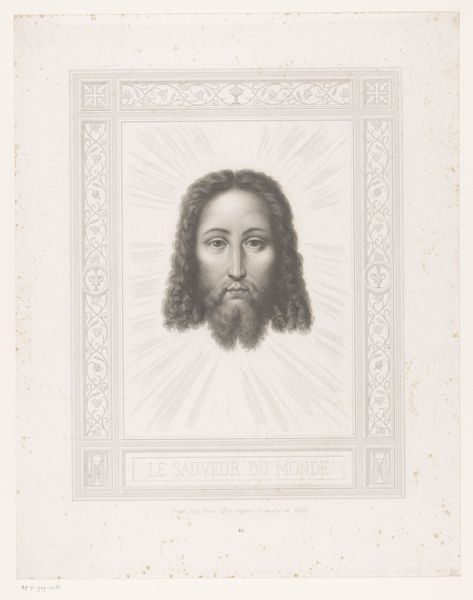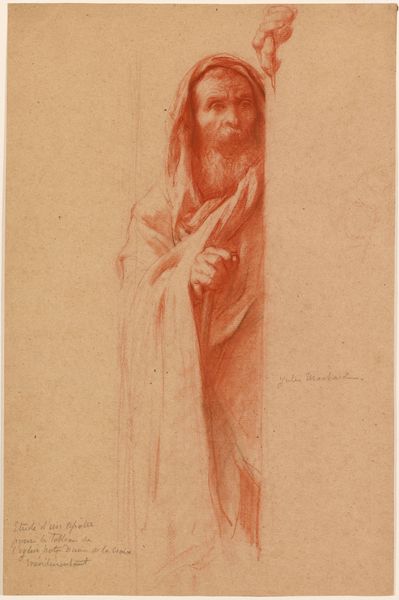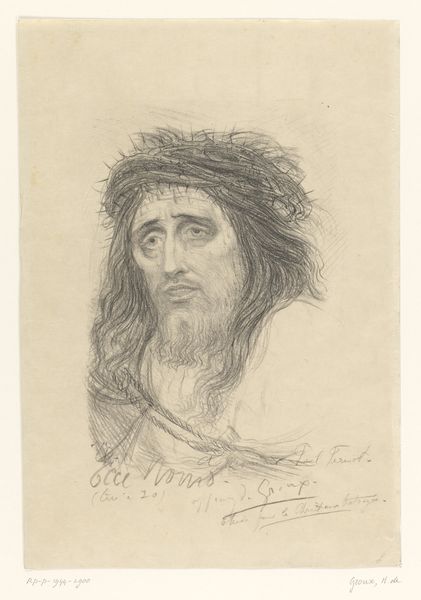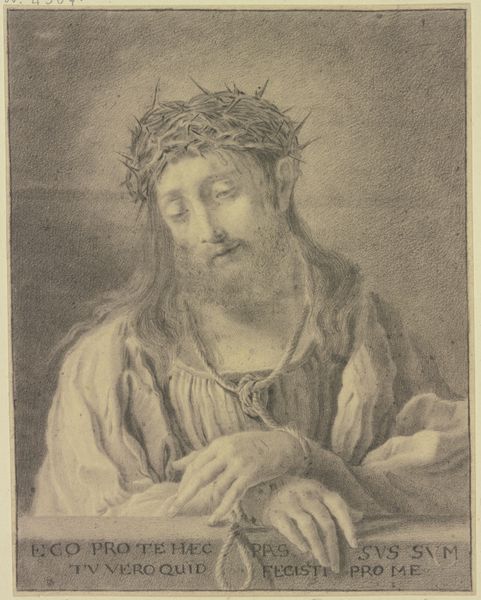
drawing, pencil
#
portrait
#
pencil drawn
#
drawing
#
charcoal drawing
#
pencil drawing
#
pencil
#
portrait drawing
#
history-painting
#
academic-art
#
watercolor
Dimensions: 280 mm (height) x 245 mm (width) (bladmaal)
Editor: This pencil drawing, "Velsignende Kristus. Halvfigur en face," by Wilhelm Marstrand, created sometime between 1810 and 1873, has a striking simplicity. The upward reaching hand is compelling. What symbols and cultural significance do you see here? Curator: The raised hand, with its specific configuration of fingers, immediately speaks to a tradition of blessing rooted deeply in early Christian iconography. It isn't merely a gesture of goodwill. It signifies divine authority, tracing its visual lineage back through Byzantine art and even adapting gestures found in Roman oratory. Editor: So, it's a learned symbol? Curator: Precisely! It’s cultural memory made visible. The choice to render Christ in a relatively naturalistic style, departing from more stylized depictions, reveals the artist’s intention to make the divine accessible and relatable, reflecting shifting theological and social currents of the 19th century. Notice the contrast between the detailed face and sketchier rendering of the robe and arm. Why do you think Marstrand made that choice? Editor: Perhaps to draw our attention to Christ's humanity and expression? It makes him feel more present. I wonder how audiences at the time reacted to this more accessible Christ. Curator: A very astute observation! The emphasis on his human qualities, coupled with the blessing gesture, suggests a move towards a more personal and internal experience of faith. This work becomes not just an image to venerate, but an invitation to connect. Editor: It’s fascinating to think about how artists use and reinterpret symbols to convey deeper meanings, especially in times of change. Thanks, I’ve learned a lot! Curator: Indeed. It prompts us to consider how cultural memory continues to be re-imagined in visual form.
Comments
No comments
Be the first to comment and join the conversation on the ultimate creative platform.
